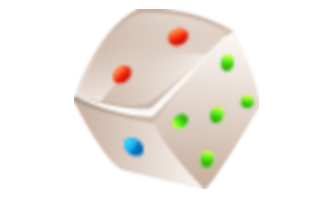Animals and their needs
Science - Third Grade
What are Ecosystems?
Presentation

Living or Nonliving?
Presentation

What are Ecosystems?
Presentation

Exploring Ecosystems
Virtual Lab

Living or Nonliving?
Interactive

Matching Parts of the Ecosystem
Interactive

Living Organisms Sorting
Interactive

Animals and their needs
Study Guide

Animals and their needs
Quiz

Animals and their needs
Flash Cards

Animals and their needs
Worksheet

Animals and their needs
Game

Animals and their needs
Vocabulary List

Grouping of Animals
Flip Chart

Study Guide Animals and their needs
❮
1
/
5
❯
ANIMALS All plants and animals are living organisms. Both plants and animals need certain things in order to survive and use certain parts and structures in order to get what they need from the environment. Animals need water, food, shelter, and oxygen to survive, and they have many different body parts to get these things they need. Lesson Checkpoint: What are four things an animal needs to survive? Water Animals use certain body parts to drink. Animals need water. Whereas plants take in water through their roots, animals take in water through their mouths or beaks. © Copyright NewPath Learning. All Rights Reserved. Permission is granted for the purchaser to print copies for non-commercial educational purposes only. Visit us at www.NewPathLearning.com.
Food Animals have body parts to help them catch and eat the particular food they need. When an animal is the predator trying to catch its prey (which is the animal it wants to eat), these characteristics are important. When an owl is chasing a mouse to eat, the owl is the predator and the mouse is the prey. Here are some examples of the ways different species use their physical traits to get and eat the food they need. • An owl has sharp claws for catching and killing its prey. • A humming bird uses its long beak to get nectar out of tube like flowers. An elephant use its trunk to pick up food and to feed it into his mouth. • Tigers and lions have sharp teeth that they use to tear and chew tough meat. Lesson Checkpoint: What is an example of a body part an animal uses to eat? © Copyright NewPath Learning. All Rights Reserved. Permission is granted for the purchaser to print copies for non-commercial educational purposes only. Visit us at www.NewPathLearning.com.
Movement Animals have different body parts that help them move. For example, an elephant has four large feet to support its very large body and help it move quickly and surely. A duck has webbed feet for faster swimming. A monkey has long arms, long legs, and even a tail, for moving easily through the dense forests on tree limbs and vines. Protection Animals also have body parts that serve to protect them from predators and dangerous conditions. Here are some examples: • A turtle has a shell that protects its soft body and provides a hiding place • A porcupine has sharp quills that keep a predator from harming its body • A rattlesnake uses poisonous venom to harm its prey when it bites • A skunk has a strong odor that it releases to make a predator leave it alone. Lesson Checkpoint: What do many snakes have that they use as protection against predators? © Copyright NewPath Learning. All Rights Reserved. Permission is granted for the purchaser to print copies for non-commercial educational purposes only. Visit us at www.NewPathLearning.com.
Shelter Animals need shelter to survive, too. A shelter is a place that covers and protects an animal. Lesson Checkpoint: Name an example you have seen in nature of an animal’s shelter. Reproduction Reproduction is the making of a new organism from living organisms. Animals reproduce and have their young in different ways. Many animals have live births, which is when the baby or babies develop inside the mother and then the mother gives birth to the live baby or babies. Some animals give birth to one offspring, or baby, at a time. For instance, a giraffe usually gives birth to only one baby at a time. Other animals give birth to more than one offspring at a time. For example, cats and dogs usually give birth to more than one baby at a time. Lesson Checkpoint: What is one animal that has a live birth? © Copyright NewPath Learning. All Rights Reserved. Permission is granted for the purchaser to print copies for non-commercial educational purposes only. Visit us at www.NewPathLearning.com.
Some animals lay eggs instead of having live births. The mother lays the eggs, the offspring develop inside the eggs, and then the babies hatch when they are fully developed. A chicken is an animal that lays eggs. Most of the time the mothers take care of the eggs while waiting for them to hatch by keeping the eggs warm and by protecting them from any danger. Some animal dads however are in charge of taking care of the eggs. For example, the emperor penguin dads take care of the eggs and protect them from the bitter cold. Lesson Checkpoint: What animal dad takes care of their young? © Copyright NewPath Learning. All Rights Reserved. Permission is granted for the purchaser to print copies for non-commercial educational purposes only. Visit us at www.NewPathLearning.com.
